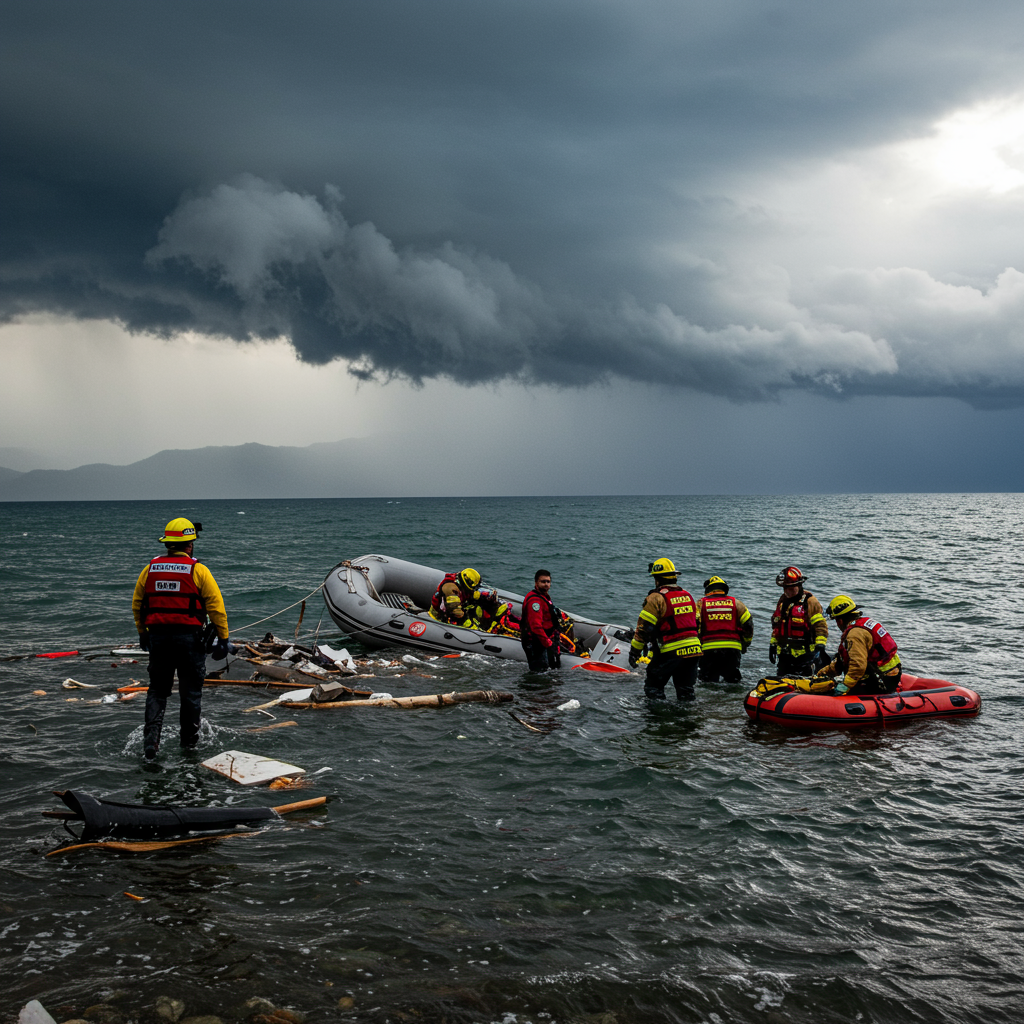Deadly Incidents Plague Gaza Aid Distribution
United Nations agencies have harshly condemned the system for distributing aid in Gaza, following reports of dozens of Palestinians killed and injured by Israeli fire while desperately waiting for food and supplies. UN officials have branded the mechanism “an abomination,” a system that “humiliates and degrades desperate people,” and starkly described it as a “death trap costing more lives than it saves.”
Recent days have seen chaotic and deadly scenes unfold. According to rescuers and hospitals, at least 46 people waiting for aid were killed in two separate incidents in central and southern Gaza. Footage from al-Awda hospital in Nuseirat depicted the grim reality, with young men suffering gunshot wounds overwhelming medical staff, filling every bed, and forcing casualties onto the floor. One heart-wrenching scene showed a woman cradling the face of her deceased husband who had been brought in.
Rescuers and medics reported at least 21 killed and 150 injured in central Gaza near a site linked to the Gaza Humanitarian Foundation (GHF). Witnesses described thousands gathering near the site, located within an Israeli military zone, when soldiers allegedly opened fire.
In southern Gaza, near a GHF site north of Rafah, paramedics reported at least 25 deaths in a separate incident. A witness recounted Israeli tanks advancing and opening fire on civilians waiting for aid without warning, leading to widespread casualties and blood.
These incidents, described as a “near daily occurrence,” have drawn renewed attention to the extreme dangers faced by civilians seeking essential aid. Since the GHF began operations in late May, over 400 Palestinians have been reported killed by Israeli gunfire or shelling while attempting to reach distribution points.
International Outcry and Contradictory Accounts
The mounting death toll has fueled strong international criticism. A spokesman for the UN human rights office denounced Israel’s “militarised humanitarian assistance mechanism” as contrary to international standards and stated that the “weaponization of food for civilians… constitutes a war crime.” The head of the UN agency for Palestinian refugees (Unrwa) echoed the sentiment, calling the newly created mechanism a “death trap.” UN human rights chief Volker Turk stated before the UN Human Rights Council that “Israel’s means and methods of warfare are inflicting horrifying, unconscionable suffering on Palestinians in Gaza” and reiterated calls for a full investigation into the attacks near aid sites.
Accounts of what transpired during these incidents vary significantly. Witnesses consistently describe Israeli troops opening fire on large crowds of civilians waiting for aid. Conversely, the Israel Defense Forces (IDF) have stated they identified gatherings near operating troops and that warning shots were fired, with one incident involving an aircraft strike on individuals who continued approaching. The IDF maintains details are under review and has stated they were not aware of some specific incidents reported. Reports have also mentioned the presence of local armed gunmen shooting in some areas. The GHF itself has reportedly denied that shootings occurred near its sites during certain incidents.
The Contested Role of the Gaza Humanitarian Foundation (GHF)
The aid distribution challenges are closely linked to the operations of the Gaza Humanitarian Foundation (GHF). Although officially a private entity, the GHF receives backing from the US and Israel, operates with opaque funding, and utilizes armed private security contractors.
The GHF began operating after Israel eased its total blockade over a month ago, following a period where virtually no food entered the territory, pushing the population to the brink of starvation. Israel views the GHF as crucial to a new aid strategy aimed at undermining remaining Hamas control.
However, the GHF has faced significant resistance from UN agencies and major aid groups, who have refused to cooperate with it. Critics accuse the GHF of violating humanitarian principles by aligning with Israel’s war goals. Unicef has criticized the GHF-run system for “making a desperate humanitarian situation worse,” highlighting issues like a lack of clear information on site locations (many in combat zones) and communication problems exacerbated by internet outages.
The IDF maintains it allows the GHF to “operate independently” and works to ensure safe and continuous distribution in accordance with international law. Despite this, distribution sites, particularly those linked to the GHF, have tragically become areas associated with extreme danger and high casualties.
Voices from Gaza: Fear and Despair
For the civilians in Gaza, the desperate need for food is overshadowed by the risk of death. Umm Raed al-Nuaizi, a widow whose son was shot while trying to get food, questioned, “Why are our children’s lives seen as so cheap?” Her son, seeking flour for his hungry family, is now in intensive care.
In Gaza City, a father whose son was previously killed stated his family is reduced to eating bread and salt, but he refuses to risk his life at GHF centers. He calls them “death zones,” lamenting, “Every day people go there and die. What are we to do?” Eyewitnesses have also described the GHF operations as a “trap” and a “killing.”
Despite Israel now allowing some aid lorries for the UN and other groups (like World Central Kitchen, which recently restarted limited operations), the overall volume of food reaching Gaza remains critically inadequate. Experts continue to warn that the territory is on the brink of famine, adding to the immense suffering in a region also facing severe shortages of clean water and essential resources. The tragic deaths near aid distribution points underscore the perilous environment civilians navigate daily in their struggle for survival.




